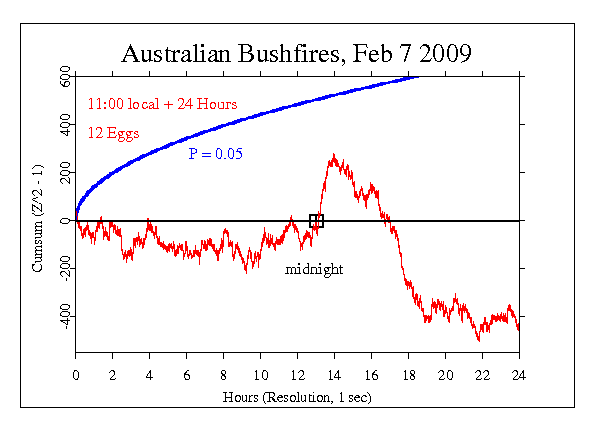|
Authorities confirmed that at least 108 people died in fires
described by Prime Minister Kevin Rudd as "hell in all
its fury", gave warning that the number of dead was
expected to climb higher as they continue the grim search
for at least 100 people who remain unaccounted for in the
ruins of houses and the shells of charred cars.
Authorities said more destruction was possible, with 31
fires still burning in the state, although a cooler front
was aiding firefighters. It was estimated it could take
weeks to bring some of the fires under control.
Mr Rudd said the bush fires, some of which police believe
were deliberately lit, constituted "mass murder", with media
reporting the death toll could reach 170 as authorities
searched hundreds of burnt-out homes.
The infernos, which started on Saturday in a period of
record temperatures, destroyed at least 750 homes as they
burned through 350,000 hectares of towns and farmland in the
state of Victoria in a day and night already dubbed
"Black Saturday". Entire towns have been wiped off
the map, with aerial images of the region showing an eerie
moonscape of blackened earth and collapsed homes where
fields and communities used to stand.
Most of the damage was done by two massive fires - one that
virtually wiped out towns northeast of Melbourne including
Kinglake and Marysville with a 60-mile front - and a second
inferno that raced across Gippsland. Burnt-out cars were
strewn across the road outside Kinglake, testimony to
residents who made doomed attempts to escape.
GCP hypothesis test: I have not been able to learn when the
fires started or the time of the tragic loss of life, so we
will use a 24 hour period that definitely includes most of
the early part of the tragedy.
11:00:00 Saturday February 7, 2009 in Australia/Melbourne
converts to
00:00:00 Saturday February 7, 2009 in UTC. We will make the
formal prediction the 24 hour UTC day, which includes 11:00
am Saturday to 11:00 Sunday, Melbourne time.
The resulting
Chisquare is 85961.001 on 86400 df, for p = 0.855 and
corresponding Z = -1.056.
I have marked an unusual peak in the middle of this data sequence
beginning at midnight with a very strong positive departure
that persists for half an hour then turns to a persisting
negative trend for the rest of the 24 hour period.

It is important to keep in mind that we have only a tiny
statistical
effect, so that it is always hard to distinguish signal from
noise. This means that every "success" might be largely
driven by chance, and every "null" might include a real
signal overwhelmed by noise. In the long run, a real effect
can
be identified only by patiently accumulating replications of
similar analyses.
|